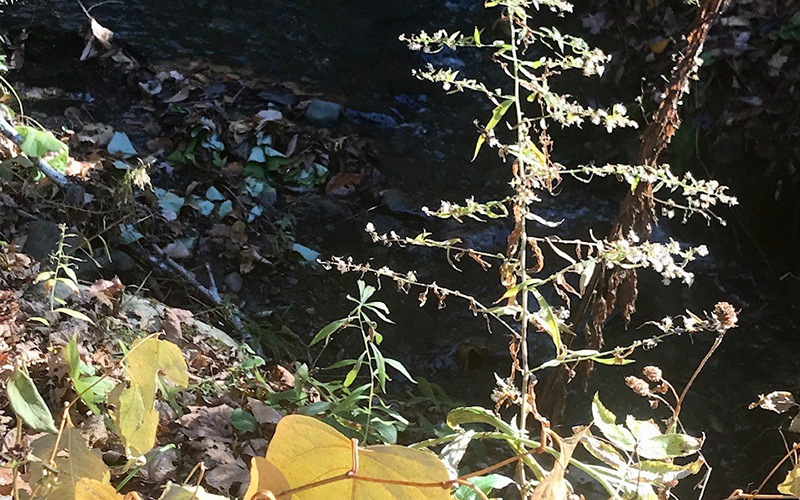The Warren Conservation Commission has shown that a multi-year effort to control Japanese knotweed can make a real difference. Consider these facts: Of 41 original knotweed sites identified on Roxbury Gap and Plunkton Roads, 25 (61%) have been eradicated and 12 (29%) severely weakened. Similar results were achieved on Lincoln Gap, Fuller Hill, Brook, Airport and Prickly Mountain roads.
Along the Mad River at Quayle Bend Conservation Area a very large infestation of knotweed has essentially been eliminated and natural vegetation is returning.
"The big news is that knotweed is controllable and can be eliminated with repeated attention. This is a fundamental change in our collective understanding of the plant that is replacing the previous fear and trepidation that essentially throttled any action,” explained Jito Coleman, chair of the Warren Conservation Commission.
After observing multiple new and spreading knotweed sites along the upper roadways in Waitsfield, members of the Waitsfield Conservation Commission and Select Board consulted with Coleman about Warren’s work and conducted an inventory of knotweed sites along town roads.
As shown on the map, knotweed was found along Sherman, North, Brook, Palmer Hill, East Warren, Floodwoods, Reed, Meadow, Common and Old County roads. Inspired by what has been accomplished in Warren and troubled by the disturbing spread along roadways, it was decided it was time to put together a plan and model it on Warren’s, said Curt Lindberg, Waitsfield Conservation Commission chair.
“I have this nightmare that if we don’t get to work some of our town roads will look like tunnels through knotweed jungles, said Lindberg. “Not only is this unsightly, but knotweed is doing severe damage to the natural environment. It is crowding out native vegetation, threatening biodiversity, increasing streambank erosion and lowering the water quality.”
“The renowned biologist E.O. Wilson has told us invasive species (such as knotweed) are the second leading cause of this biodiversity loss and that we are losing species at 1,000 times the natural rate,” he added.
The objectives for the initial year of the Waitsfield knotweed eradication and management plan are threefold: stop the spread of knotweed along upper elevation roadways and waterways; eradicate young infestations; and educate and engage the community in knotweed management. Eradication efforts, using manual, non-chemical methods, will focus on upper roadways and town properties. Education efforts will involve training interested residents in knotweed management, a working demonstration site along the Mad River and support for a neighborhood knotweed eradication effort. A data system will also be created to measure the impact of the campaign. All of this work will be done in cooperation with the Warren Conservation Commission and interested community organizations.
To fund this work the Waitsfield Select Board has put forward this article for consideration by voters on Town Meeting Day, March 1, 2022:
ARTICLE 6: Shall the voters authorize the town to establish a reserve fund for invasive species management (such as knotweed and emerald ash borer) and to appropriate the sum of $10,000 to establish such a fund in Fiscal Year 2023?
According to Bob Cook, a Waitsfield Conservation Commission and Planning Commission member, “This proposed initiative is a small first step to better understand, and to start to address this curse which has blemished one of The Valley’s primary and highly sought-after natural resources -- its scenic beauty. Over the past 20 years this knotweed blight has also slowly robbed The Valley of one of its premier recreational resources, the Mad River. It’s time to recognize these realities and follow Warren’s example in reclaiming The Valley’s namesake.”












